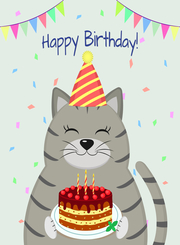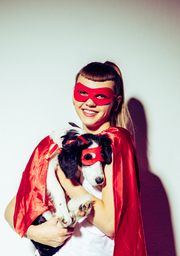Birthday Party Themes for Kids | Fun Ideas & Activities
Planning a birthday party should be enjoyable, but sometimes, coming up with a theme can be the most challenging aspect. With the right inspiration and a bit of creativity, you can find the perfect theme to make the celebration unforgettable.
Below are 15 unique birthday party themes for all ages, preferences, and styles. So, let’s get right to it. It’s time to celebrate!
15 Unique Birthday Party Themes
Kids love birthday parties, especially when there are a lot of activities, fun, and other entertainment. For kids, we have selected 15 fun ideas and activities to organize a birthday party to begin the fun.
Fun-Loving Play
Murder Mystery
Hosting a murder mystery theme party isn’t for adults only. You can arrange murder mystery games for kids with matching props and costumes to double the fun. Kids love to play characters like detectives who are here to solve the mystery. Allow other kids to join the party night in matching costumes, like detective accessories or a toy knife, to play the killer role.
Pajama Party Day
Invite kids to join the birthday party in their least unattractive pajama dress. You can even arrange a prize for the winner who wears the ugliest pajama dress. This type of activity creates more laughter and fun throughout the time, where kids enjoy poking each other dresses.
Disney Characters
Another great and colorful idea for a birthday party is to invite kids in Disney characters. There are tons of Disney characters like Cinderella, Snow White, Aladin, and more, which surely excites kids to join the party. You can even give them a contest to memorize some lines of their Disney Characters and play the drama for more fun.
Wild And Old
Zoo Animals
Host a birthday party with a ZOO theme. Decorate the entire place with ZOO-like decorative lights, greenery leaves, and other accessories. Invite kids to join the party in their favorite ZOO animal character. Offer a variety of snacks and food options as kids love to eat a lot. You can also offer them choices for drinks or fresh seasonal juices.
Guess The Age Party
You can theme a party around many fun ages, such as dual digits, sweet 16, or 21st birthdays. Age themes allow you to choose any colors or patterns to complement the celebration. It is another great opportunity to announce the age of the birthday person in the form of a party.
Water Party
For the younger guests, consider getting a variety of water guns, water balloons, and other water toys. You can even offer activities that are safe and fun for kids of all ages. You could also set up a water obstacle course or a simple game of water limbo. For the older guests, you might want to provide more advanced water weaponry like super soakers and water bombs for an added level of excitement.
Fantastic Games
Scavenger Hunts
Scavenger hunts aren’t just for kids; they can be enjoyable for all ages. Children could have fun with a scavenger hunt in a shopping mall or a safe shopping area. If you’re hosting a party at home, then arrange the atmosphere according to the hunting. Provide spaces to kids so that they can hunt and enjoy the theme as well.
Pop-up The Bubbles
At your bubble-themed event, consider using bubble-shaped balloons. With these balloons, you can craft beautiful balloon arches that will add a touch of magic to the venue. Additionally, you can adorn each table with bottles of bubbles to provide as party favors. A bubble party gives an ethereal and fun-filled experience that will enchant all your guests.
Racing
One of the most demanding activities ever. Host a birthday party event and decorate the environment with a racing challenge. Allow every participant to work as a team and complete each challenge. There are different kinds of races, such as, team race, spoon-ball race, three-legged race, cover the legs race, blind race (where participants must close their eyes), and more.
The Outdoor Fun
Kids Movie Theatre
Host a birthday party event with a theme of magical movie night. Play some famous kids’ Disney movies in HD print outside on a projector. Kids love to enjoy time holding their favorite popcorn and juice and watching a movie.
Tea Party
Giving a tea party vibes to young ones creates more disciplines and unity. Arrange a birthday party for young guests to experience the joy of a tea party. At this party, offer some cute snacks like marshmallow shots, strawberry cupcakes, cute mini chocolate bars, or colorful candies.
Pool Party
What’s more exciting than hosting a pool party in the summer? Kids love to splash all day when the sun touches the earth and makes it super hot. Ensure that all the beach safety kits are ready to avoid any incidents, as these are kids, and they need to be protected. As the sun sets, make the celebration sparkle by handing out sparkler firework sticks. They’re safe, fun, and perfect for capturing those glowing smiles in photos — a magical way to end a joyful summer party.”
Entertainment That Never Ends
Photo Booth Theme
Set up multiple photo booth stations with various props and a camera on a tripod. If you don’t have enough cameras, consider borrowing some from friends or purchasing affordable tripods for cell phones. You can then compile the best photos into a digital album to send to your guests as a thank-you.
Winter Wonderland
The winter theme is versatile and enjoyable in every season. It offers a range of activities, such as using snow machines to create a winter wonderland. Kids also engage in fun pretend snowball fights, craft delicate and unique snowflakes, and savor the chilly delight of snow cones. These activities are not limited to winter and can be enjoyed throughout the year.
Dance Party
Get the party started with a dance-themed event. Hang a disco ball, set up quality speakers, and rent a karaoke machine for a fun-filled night of singing and dancing.
Conclusion
These 15 fun and entertaining birthday party theme ideas will make any event successful. There are always options available to modify the theme as you wish. Make sure to keep in mind that you’re hosting a party for kids, so the arrangement must be according to them. Have them come dressed up in costumes or just as they are. Also, offer food with some decorative ornaments to attract kids. Let’s try these ideas and make your kids feel the best moment ever – get ready to celebrate!




 Katie Brenneman is a passionate writer specializing in education, mental health, family lifestyle and online safety. When she isn’t writing, you can find her with her nose buried in a book or hiking with her dog, Charlie. You can follow her on
Katie Brenneman is a passionate writer specializing in education, mental health, family lifestyle and online safety. When she isn’t writing, you can find her with her nose buried in a book or hiking with her dog, Charlie. You can follow her on 



